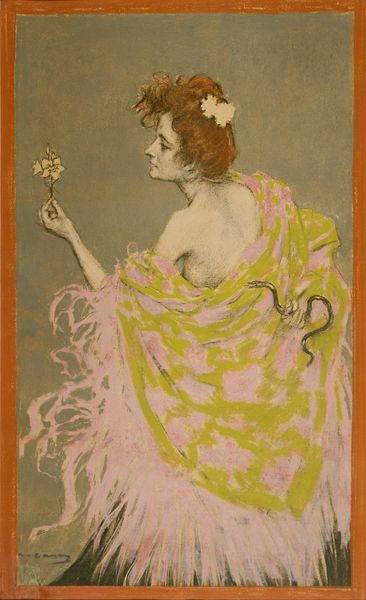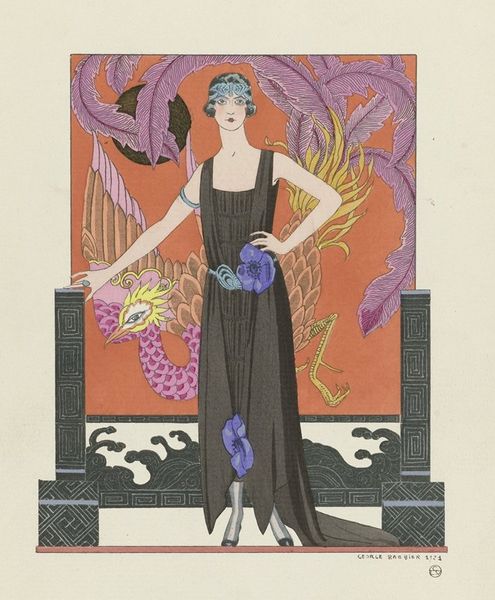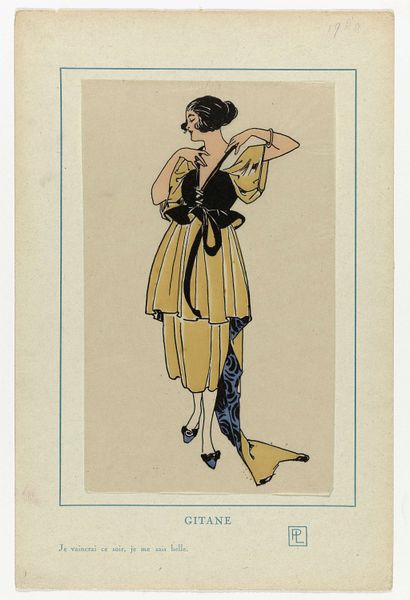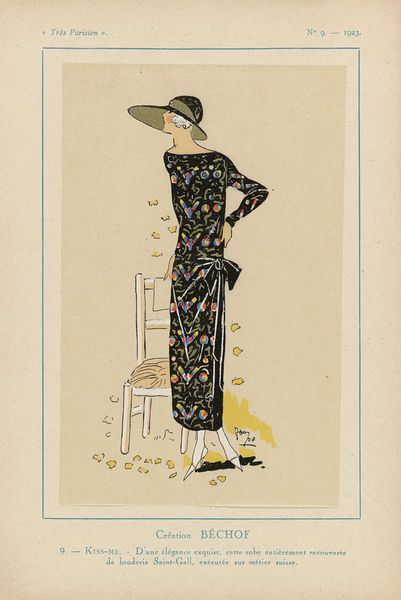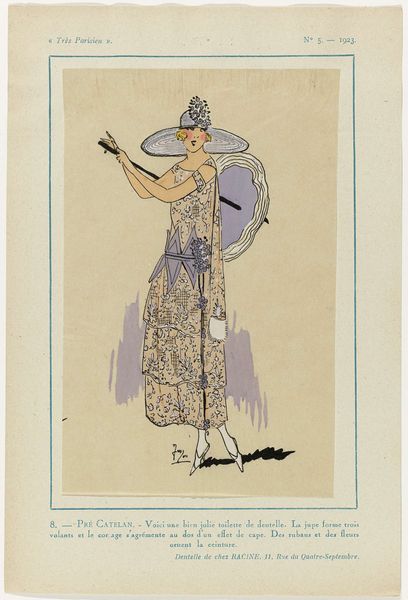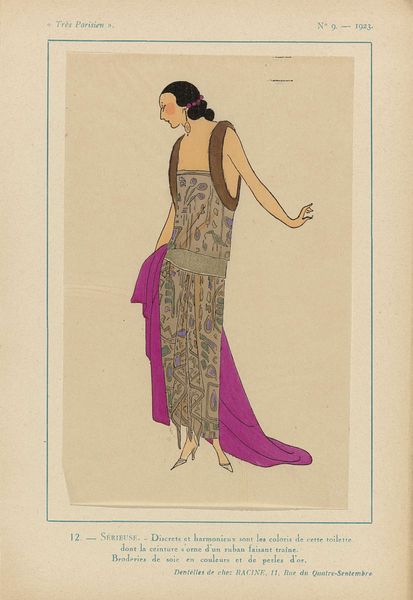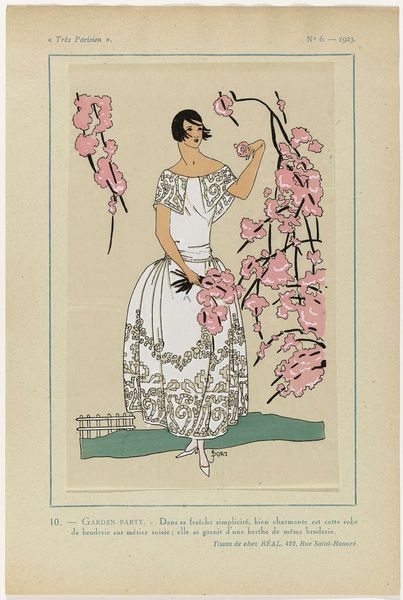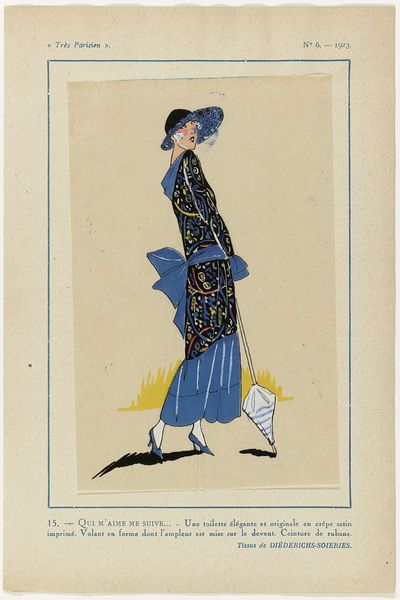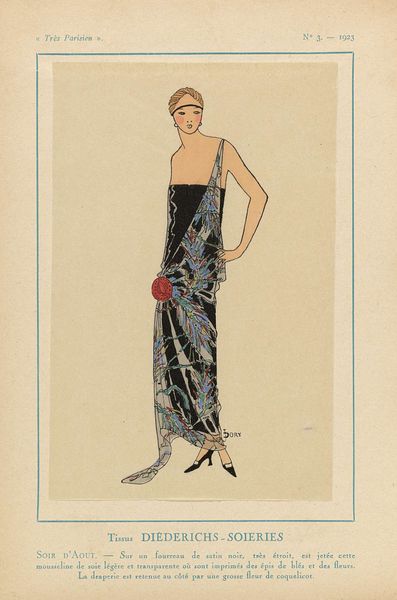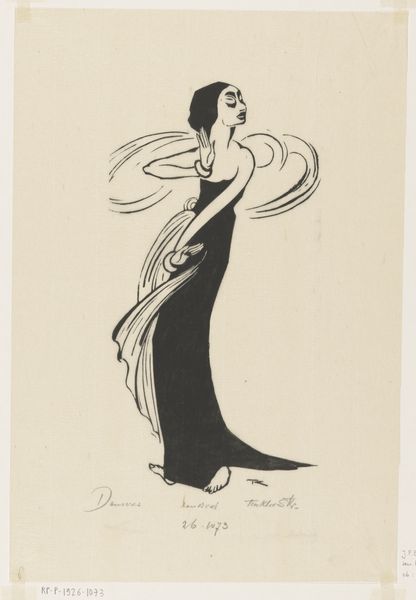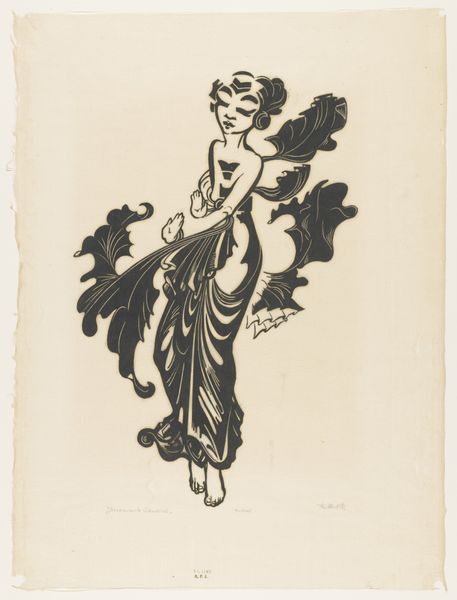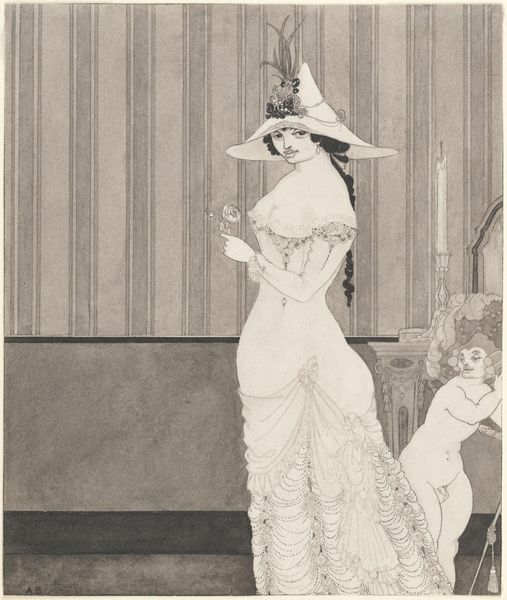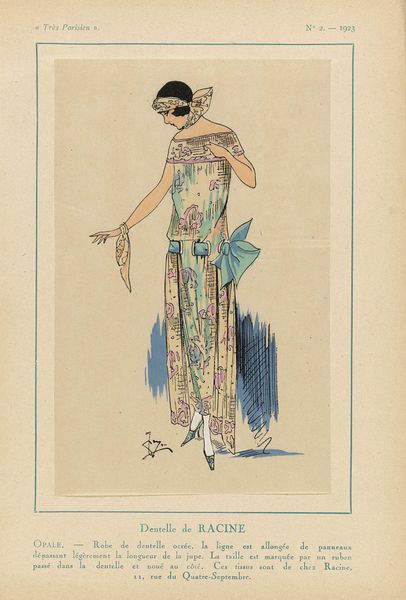
Light Opera Girl, from the series "Hamilton King Girls" (T7, Type 6), issued by Turkish Trophies Cigarettes 1913
0:00
0:00
drawing, print
#
portrait
#
drawing
#
art-nouveau
#
girl
# print
#
figuration
#
watercolor
#
profile
Dimensions: Sheet: 8 x 6 in. (20.3 x 15.2 cm)
Copyright: Public Domain
Editor: This is “Light Opera Girl,” a print by Hamilton King from 1913, and it originally appeared on cigarette cards. The first thing I notice is how dreamlike she seems; like a fleeting vision of feminine grace. What can you tell us about this image? Curator: It’s fascinating how King uses the operatic dancer as a symbol here. Opera itself, particularly "light opera" or operetta, already represents an idealized, romantic world, and he doubles down on that through the stylized depiction of the woman. She becomes an archetype of feminine allure, packaged and sold with Turkish Trophies Cigarettes. Editor: So she’s not just a portrait, but a symbol intended to evoke certain feelings or desires in the viewer? Curator: Precisely. Think about it: what did cigarettes symbolize in that era? Sophistication, worldliness, perhaps even a touch of rebellion. By associating that with the image of a beautiful, elegant woman, King's image taps into very specific cultural aspirations. The ephemeral quality, her almost spectral appearance – it's all designed to create an alluring and slightly unattainable ideal. What do you notice about her costume and pose? Editor: It's stylized, theatrical... she almost seems to be floating. The sweeping lines and the hints of color are striking too. It does feel less like a real woman and more like an aspiration. I guess I hadn’t considered how potent symbols can be, even in something as small as a cigarette card. Curator: These tiny images reveal huge societal beliefs. Advertising is a powerful method for shaping perception. We carry these embedded narratives with us in surprising ways. Editor: Absolutely. Thinking about the context has completely changed my perception of it. It's made me realize how art can be persuasive. Thanks so much for shedding light on this. Curator: My pleasure. Always good to contemplate symbols of aspiration!
Comments
No comments
Be the first to comment and join the conversation on the ultimate creative platform.
